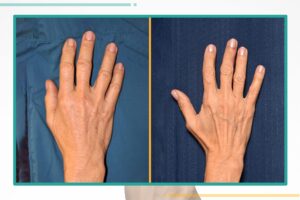Get Rid of Finger Fat
Everybody’s body distributes extra fat in a unique way and they want to Get Rid of Finger Fat. For several individuals, excess weight directly affects their fingers. Targeting weight loss in a particular body part is challenging. Therefore, you must lose weight overall if you want to reduce the size of your hands and fingers.
If you want to tone your fingers and lose weight elsewhere, you can do it with a combination of food and exercise. Let’s talk about healthy weight loss techniques and activities that will help you have smaller fingers.
How to Get Rid of Finger Fat?
- Exercise and establishing a calorie deficit in your diet should be the main goals of your efforts if you want to make your fingers slimmer.
- Making lifestyle adjustments like consuming more water and avoiding foods rich in salt can also make your fingers appear smaller.
- As you lose weight generally, you can tone your hands by performing exercises that focus on their muscles.
Watch the full procedure of Hollywood Smile

Swollen Fingers Causes
Your fingers may be swollen for a variety of causes, from consuming meals high in sodium to more serious conditions like inflammatory arthritis. Among the potential outcomes are:
- Retention of Fluids: Your body tries to dilute too much salt by retaining more water than normal when you consume too much. Your fingers and other body parts may become noticeably swollen as a result.
- Warmth: Blood vessels might enlarge and fluid can flow into your hands (and feet) due to gravity when you take a hot shower or spend time in hot, muggy weather.
- Pregnancy: Your body produces roughly 50% extra fluid, including blood, during pregnancy. Swelling in many body parts, particularly the hands and feet, may result from this. This is usually not a cause for concern, but if you experience sudden, significant swelling in your hands or face, or if it is accompanied by pain, shortness of breath, or chest pain, you should contact your doctor immediately to rule out illnesses like preeclampsia.
- Arthritis: Your fingers and joints may swell as a result of several types of arthritis. Among the conditions most likely to cause this issue are osteoarthritis, rheumatoid arthritis (RA), and psoriatic arthritis (PsA). Swollen fingers may occasionally be relieved by medications that address the symptoms of arthritis, but not usually.
- Sprain or Strain: You may have strained or sprained your finger, or you may have moved awkwardly and pulled your thumb or another finger back too far.
Follow the Signs:
- Infection: An infection may develop if you have been picking at your cuticles or have otherwise damaged the tissue surrounding your fingertips. The body’s natural immunological response includes swelling. See a doctor immediately if you have an extremely swollen finger, have problems moving your fingers, or find that touching your finger hurts a lot.
- Lymphedema: A lymph fluid accumulation can cause swollen tissue, notably in your arms. Although lymphedema can occasionally emerge without a clear explanation, this may happen to those who had their lymph nodes removed as part of the therapy for breast cancer. The fingers will usually be swollen along with the rest of the arm. See your doctor first, but physical therapy can often assist.
- Disorders of Repetitive Motion: Carpal tunnel syndrome, tendinitis, trigger finger, and ganglion cysts are a few examples of repetitive motion illnesses. They are the outcome of someone repeatedly doing the same motions. The symptoms may include pain, numbness, and loss of strength and flexibility in addition to swollen fingers. To alleviate the symptoms, the movement must be stopped or significantly reduced. This should usually result in recovery when combined with ice, painkillers, physical therapy, and, in the worst situations, surgery.
- Gout: When uric acid crystals accumulate around the knuckles, gout, an inflammatory joint disease frequently linked with the big toe, can cause swelling in the fingers.
Prescription medicine will treat the systemic illness, while over-the-counter pain medications can offer some relief. - Scleroderma: An autoimmune condition that affects connective tissue is called scleroderma. Among many other symptoms, it can result in pain, inflammation, thickness of the skin, and swelling of the fingers. Although there isn’t a treatment for this illness, doctors might suggest drugs to manage some of its symptoms. Another possibility is physical therapy.
Read everything you need to know about Foot-Tuck
Swollen Fingers: Signs & Symptoms
Pain and discomfort may result from swelling due to the accumulation of pressure. In addition to momentarily decreasing your range of motion and flexibility. Swollen fingers can cause severe stiffness if they persist for an extended length of time. In rare instances. Swelling may worsen to the point where it impairs blood flow or damages the hand and forearm muscles and nerves. This is particularly true for severe infections and fractures.
Swelling Fingers Therapy
The accumulation of fluid in the hand and wrist’s gaps is the primary cause of swollen fingers and overall swelling. Usually, this fluid gathers in places where the blood arteries are unable to “pump” it out. As a result, gravity holds the fluid in place and even permits additional fluid to enter the hand when the hand and arm are kept down. Gravity will therefore draw the fluid out of your hand and arm if you keep them up, preferably above the level of your heart. Imagine it as water flowing downhill; if you keep your hand down, the water enters your hand, and if you keep your hand up, the water returns to your body. It’s crucial to keep the hand raised, possibly for long stretches of time. Since it takes a lot longer for edema to leave the hand than it does to enter it, this is particularly true following an injury or surgery.





